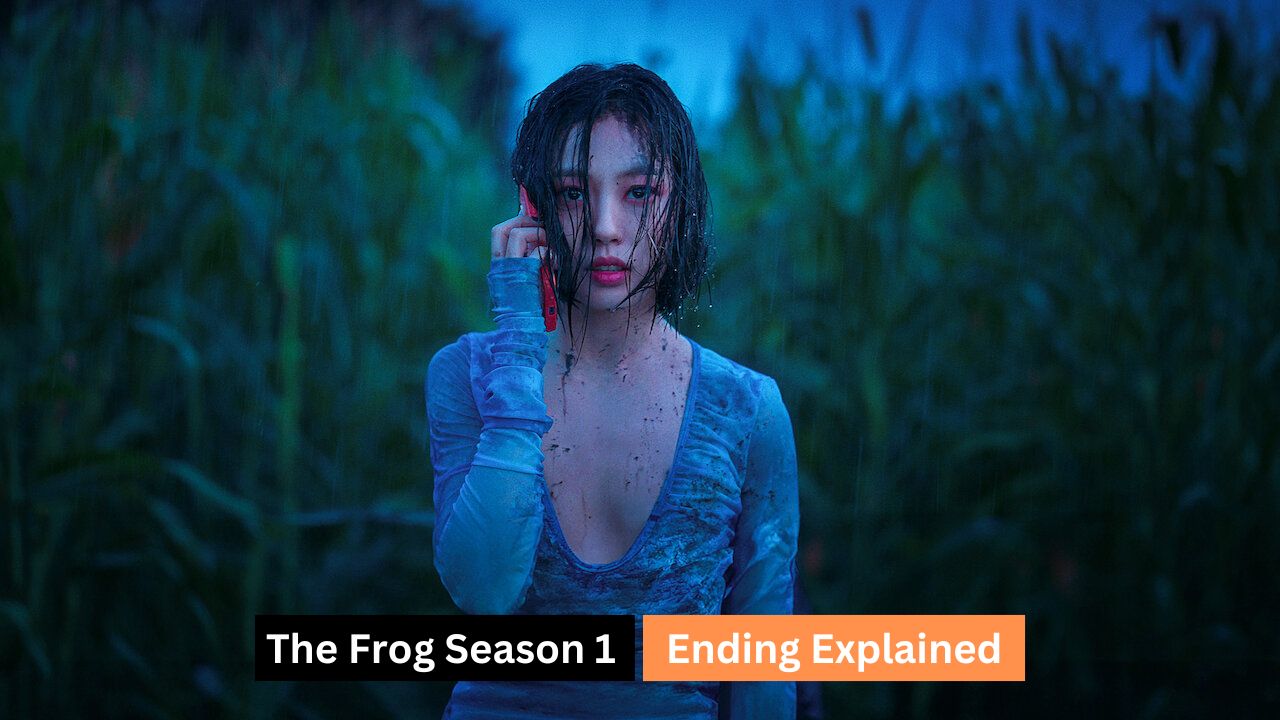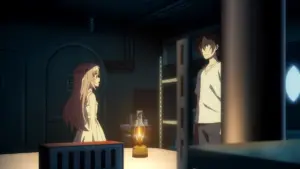The finale of “The Frog” leaves viewers with an eerie sensation and a spine-chilling conclusion. This Korean drama stands out from the rest, weaving a clever mystery that slowly reveals its pieces as the story progresses. Let’s dive into the intricacies of the ending and explore some of the ambiguous elements that might have left you pondering.
Table of Contents
The Frog Season 1 Ending Explained

“The Frog” follows two timelines – one set in the early 2000s and another in the present day. While these storylines might seem disconnected at first, they share a common thread: the impact of trauma on those who witness violence versus those who experience it firsthand.
Who Lies Dead in the Field?
The finale reveals a shocking twist: Seong-A brutally murdered police officer Seon-Tae. After discovering Seong-A’s hidden recording device, Seon-Tae met a gruesome fate. Seong-A chased him down and literally sliced him in two, leaving his body in a field. The discovery of his mutilated corpse sends shockwaves through the small town, especially when his senior officer stumbles upon the scene.
Seong-A’s Fiery Revenge
In a vengeful act, Seong-A sets fire to the local laundromat. She burns her clothes there, likely retaliating against the owner who might have helped Bo-Min uncover Seong-A’s sinister activities.
The Demise of Seong-A
Surprisingly, Seong-A doesn’t survive to haunt the other characters – at least not physically. Ha Jae-Sik, Si-Hyeon’s father, delivers the fatal blow. He shoots Seong-A, sending her lifeless body face-first into the swimming pool. This scene eerily mirrors a previous moment from episode 4, where Yeong-Ha imagined Seong-A’s death in a similar fashion.
Yeong-Ha’s Twisted Logic
Yeong-Ha believes Jae-Sik deserves to end Seong-A’s life due to his own guilt. He feels complicit in Si-Hyeon’s murder for allowing Seong-A to get away with it. This mirrors the guilt Gi-Ho’s father, Sang-Jun, has carried for years after letting a serial killer into his motel, forever altering his family’s life.
Seong-A’s Motives Unveiled
The show doesn’t delve deeply into Seong-A’s psyche, brushing off her actions as a “psychotic episode.” However, we can glean that she harbors a deep aversion to motherhood. Her explanation to Jae-Sik for killing his son is chillingly simple: she didn’t want to be a mother. This revelation highlights the stark contrast between Seong-A’s desires and Jae-Sik’s search for a mother figure for his child.
The Mystery of Si-Hyeon’s Body
Law enforcement never locates Si-Hyeon’s body or finds concrete evidence of his murder in Yeong-Ha’s cabin. The strong smell of bleach and the spotless bathroom raise suspicions. Theories range from Seong-A using chlorine bleach to dissolve the body to her mutilating and scattering the remains to avoid detection.
A Potential Twist: Unreliable Narrator?
The show’s Korean title translates to “In the forest where there is nobody,” alluding to the philosophical question: If a tree falls in an empty forest, does it make a sound? This concept may apply to Yeong-Ha’s role in the story. Did he actually witness Seong-A kill Si-Hyeon, or is he an unreliable narrator?
A flashback scene featuring Yeong-Ha and Yong-Chae setting up the vacation rental home uses distinctly different lighting. Later, we see Yeong-Ha alone in a similar warm-toned setting, reading a book and turning off Si-Hyeon’s toy dog. This shift in visual style raises an intriguing possibility: Could Yeong-Ha have fabricated the entire situation after reading about the motel incident from 20 years ago?
While this theory lacks concrete evidence, it offers an interesting perspective on the story’s events. The absence of a clear explanation for Seong-A’s actions and the circular nature of Bo-Min’s involvement (showing Gi-Ho the picture of his parents’ motel at the end) could support this interpretation.
Conclusion
“The Frog” masterfully blends mystery, psychological suspense, and moral ambiguity. The ending leaves viewers with more questions than answers, encouraging them to reflect on the nature of truth, perception, and the lasting impact of trauma. Whether you interpret the events as literal or question the reliability of the narrator, “The Frog” delivers a thought-provoking and chilling conclusion that will linger in your mind long after the credits roll.









